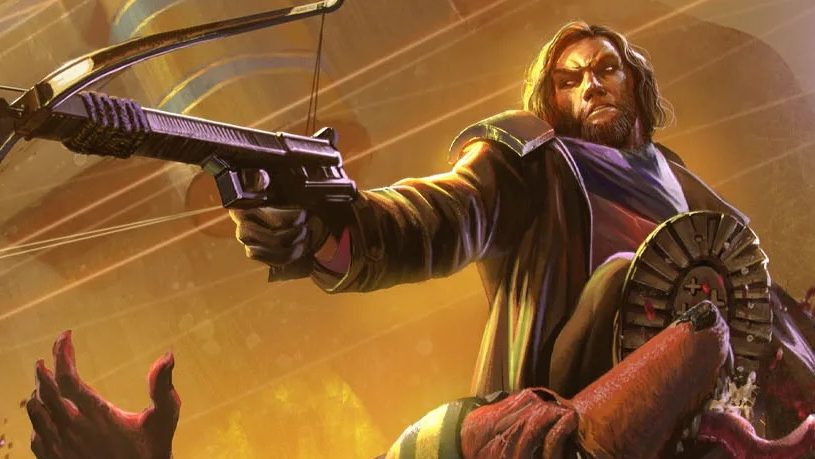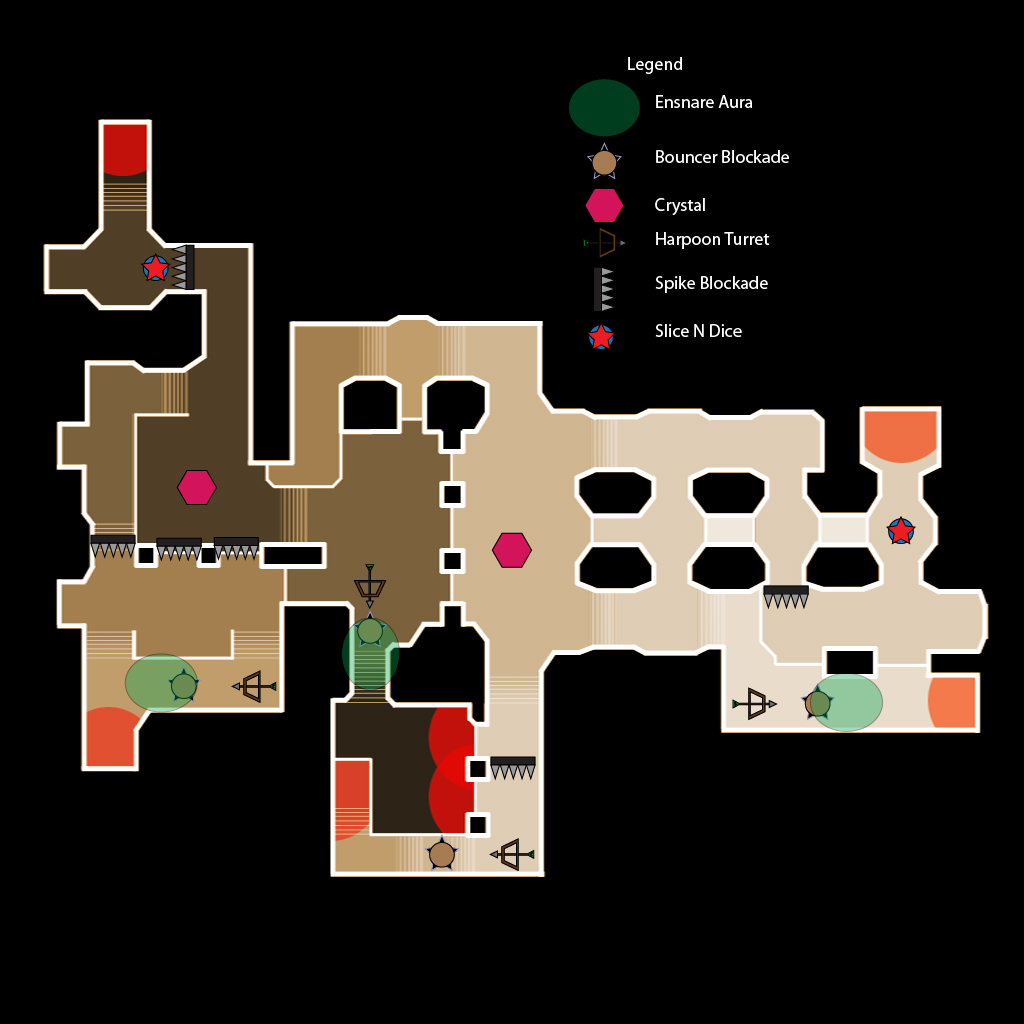A lot of first-person shooters we see today started off as classics or were inspired by them. Games such as Wolfenstein, Doom, Quake, Duke Nukem, and even Star Wars: Dark Forces all hold a special place in mys heart. They were fast-paced and had plenty of weapons to terrorize enemies with. They were often fast-paced and brutal. Project Warlock will make you feel like you’re playing a game from the ’90s. The addition of leveling up creates an almost RPG-like feeling, allowing you to spend skill points and upgrade perks. There is a mana bar that lets you bring more than just bullets to the fight. Between the levels, you can level up at stations in a small room that acts as a hub and prepare for your next mission, or just replay one you’ve already completed. Will this game live up to the classics, or just act as a failed clone with no direction?
Here’s what I liked:
Back in My Day — The first-person shooters I grew up on were Duke Nukem 3D and Dark Forces. I never played through Doom or Wolfenstein back then, but have visited them when I got older. This game did an excellent job of capturing what those games were like while adding RPG elements and magic. Even dead enemies rotate with you as you move, basically always facing you. While some may think it’s bad graphics or lazy, it’s actually just being true to that time period. I remember it back then and seeing it wasn’t annoying, but reminded me more of what I used to play. There a few moments where you get that almost déjà vu feeling. Bosses seem chaotic and you’re always moving, trying to stay alive while shooting rockets or overpowered lasers. While a lot of elements were borrowed, there were enough new things to learn that it wasn’t just a copy and paste situation.
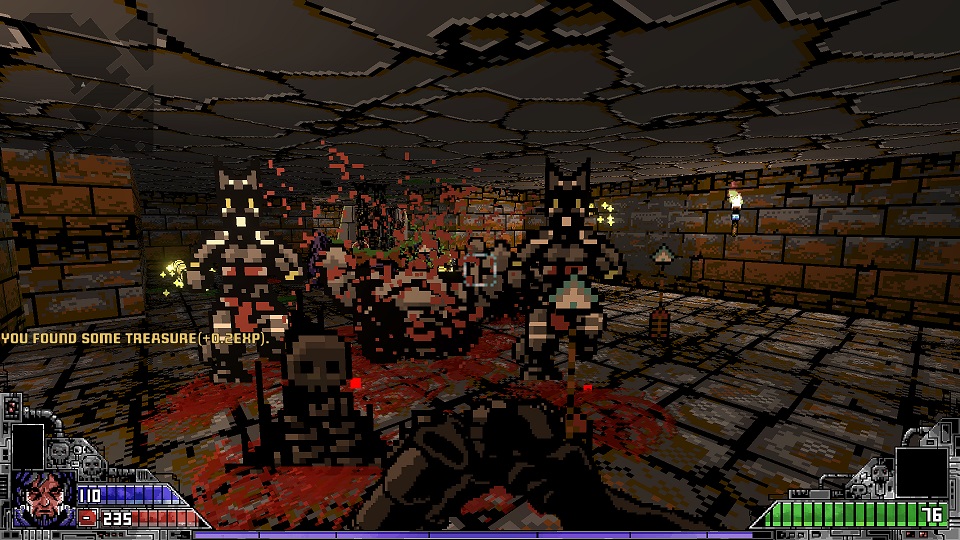
Ammo and Mana — There are plenty of weapons and spells you can find throughout the various missions. I enjoyed being able to choose which upgrades I wanted, though it was always a hard time choosing because you only get two options for each. Spells act as more of a companion, often complementing your survivability. I was happy to test out every new firearm I found. In the settings, there is an option for a reticle, which I turned on to make it easier to aim. If you’re into killing hordes of seemingly endless demons, then you’ll be glad to know that’s almost all you’ll be doing.
More Power — What really sets this apart from the style of old-school FPS is the fact you can level up and conjure magic. Replaying stages to look for missed secrets and gain the edge by obtaining attribute points was satisfying, to say the least. I am not a fan of overly difficult games but the addition of letting you go back and get more powerful sits well with me. I liked choosing where my attribute points went and the perks all really helped out. I was getting upset because sometimes death was unavoidable if monsters surround you and you’re cornered. There’s a perk for that! With the right upgrade, the ability to run through enemies is granted. Problem solved. It seems you can go a melee route too in your build; it’s cool you have a choice. Especially since you can then focus on magic (spells take the same points as weapons for upgrading). I was quite pleased with the possibilities.
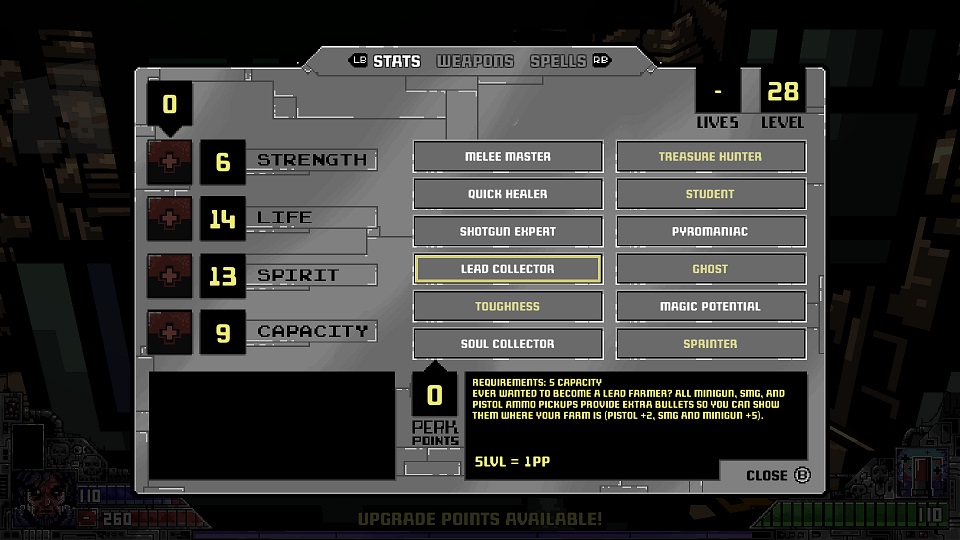
Here’s what I didn’t like:
Always in Walls — There are indeed many secrets to discover, just as there were in the classics. Hidden rooms often contain health, ammo, and even points for upgrading. It let me down, but the secrets are all based on interacting with walls. So if you can imagine, finding secrets require you to just run along the walls smashing the A button hoping to find one. That’s it. There is nothing clever about it, no switches to pull in a certain order, just a grinding attempt of clicking a button hoping to find something. There is no map, so many times I actually got lost looking in a level and forgetting how to get to the end. No more did I have a locked door requiring a key to tell me I was heading the right way (since I already opened it). There could have been more clever ways to implement secrets.
Going up? — There are places on walls you can press to either access an elevator or open an area up. If you open an area, the walls will rise and enemies will attack you. The problem is, if it’s an elevator and let’s say you back up to prepare for an onslaught of demons, it rises without you on it. Guess what? You cannot recall the elevator. You have to start the whole level over. This makes absolutely no sense! I had done it multiple times too. You think I would learn, but because it could be enemies or the elevator, I was always trying to be cautious. This happened to me more than I’d like to admit. Allowing the elevator to be recalled would fix this annoyance.
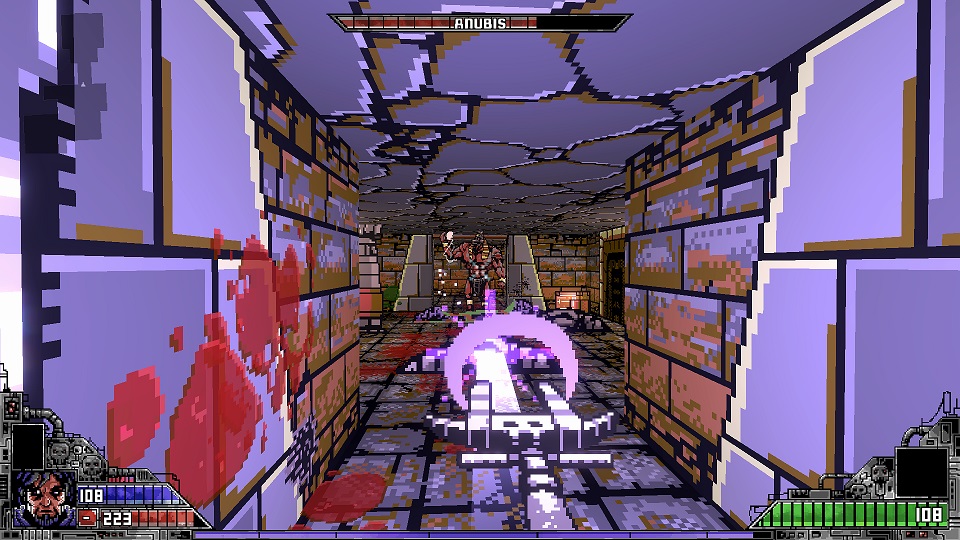
Wrap-up
The farther you get, the more it grows on you. There’s enough enemy types to keep it interesting and each chapter has its own unique touch. You can replay stages to help you level up which makes it a little easier. It’s true to the FPS genre in many ways, but of course delivers what most people want (violence). There are a few setbacks which have to do with what I think is poor testing. Non-creative secrets are not going to ruin the experience but were a bit disappointing. However, not every game gets everything right. I can tell a lot of thought went into the weapons and upgrades. Leveling up is very satisfying and it’s nice to have in a older looking game. Playing on easy was a blast yet still pretty difficult. I’m not sure if playing on harder difficulties will be for me, but even on easy it feels like an accomplishment to complete. I wasn’t blown away nor obsessed, but I can appreciate a well-made FPS that was enjoyable the whole way through. It’s also set at just the right price.
Score: Highly Recommended
Project Warlock was published by Crunching Koalas and developed by Buckshot Software on Xbox One. It was released on June 12, 2020, for $14.99. A copy was provided for review purposes.

